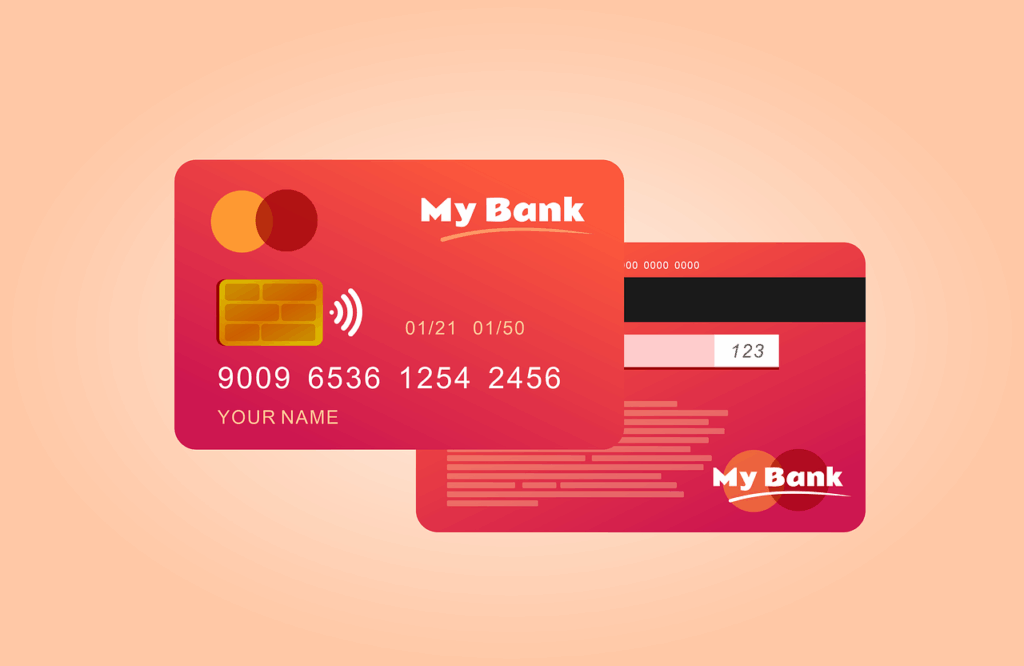
Credit card debt is ticking back up nationwide, and the latest figures paint a stark picture. Americans added a staggering $27 billion to their credit card balances in the second quarter of 2025, pushing the total credit card debt tally to a record-high $1.21 trillion nationwide. This represents not just a slight increase, but a significant 2.3% jump from the previous quarter and a nearly 6% uptick compared to the same period last year, according to the Federal Reserve Bank of New York’s quarterly Household Debt and Credit Report.
Beyond the sheer volume of debt, a troubling trend has emerged: nearly 7% of credit card balances transitioned into delinquency over the last year. This is a clear signal that more borrowers are struggling to keep pace with their payments, especially with average interest rates stubbornly hovering at nearly 22%. Such high rates can cause balances to balloon rapidly as compound interest charges accrue, creating a vicious cycle for many households.
Amidst these challenging financial headwinds and persistent economic uncertainty, the time for decisive action is now. While the sheer scale of the problem can feel overwhelming, there is good news: a wealth of proven, high-impact strategies exists to help you get ahead of your debt and regain control of your financial future. This article will outline 11 essential methods, blending financial efficiency with behavioral science, to empower you to crush your credit card debt once and for all.
1. **Paying More Than the Minimums**One of the most fundamental yet overlooked strategies in debt repayment is simply to pay more than the minimum amount due each month. Credit card issuers typically set minimum payments at a very low percentage of your balance, often around 2%. While this might seem manageable on the surface, it’s designed to keep you in debt longer, maximizing the interest banks collect over time. In the first quarter of 2025, about 1 in 10 cardholders were making only the minimum payment each month, unwittingly prolonging their debt journey.
The insidious truth is that banks profit significantly from the interest they charge each billing period. The longer it takes you to pay down your principal, the more money they make, and ultimately, the more you end up paying for the same purchases. By consistently paying just a little more than the minimum, you begin to chip away at your principal balance at an accelerated rate. This reduces the amount on which interest is calculated, leading to substantial savings over the life of the debt.
This seemingly small adjustment can have a profound impact on your financial future. Even an extra $20 or $50 added to your minimum payment can shave months, or even years, off your repayment timeline and save you hundreds or thousands of dollars in interest. It’s a guaranteed win that immediately reclaims financial resources that would otherwise be diverted to the card issuer. It represents the very first step in transforming from a passive borrower to an active debt crusher.
Read more about: 14 Budgeting Power Plays: Essential Strategies for Lasting Financial Health and Stability
2. **Weaponize Your Payoff Method: The Debt Avalanche**Once you commit to paying more than the minimums, the next strategic decision is how to allocate those extra funds, especially when you have multiple credit card balances. The Debt Avalanche strategy is the mathematically superior choice for debt payoff, designed for individuals who prioritize financial efficiency and long-term savings. This method dictates that you focus all extra monthly payments on the card carrying the highest Annual Percentage Rate (APR), while continuing to make only the minimum payments on all other debts.
The power of the Debt Avalanche lies in its ability to minimize the overall interest paid over the life of your repayment plan. By aggressively targeting the debt that accrues the most interest first, you are effectively stopping the “bleeding” from your most expensive loans. This approach yields substantial long-term savings, making it the ideal strategy for the highly analytical and patient user who can remain disciplined even if initial progress feels slow. It’s a systematic attack on the highest-cost debt first.
However, it’s important to acknowledge the potential behavioral challenge associated with the Avalanche method. If your highest-interest debt also happens to be your largest principal balance, it may take a significant amount of time to completely clear that first account. This delay in seeing a tangible “win” can be discouraging for some individuals, making it difficult to maintain motivation and stick to the plan. For those who struggle with persistence or financial anxiety, the lack of quick victories might unfortunately lead to plan abandonment.
3. **Weaponize Your Payoff Method: The Debt Snowball**In contrast to the Debt Avalanche, the Debt Snowball method prioritizes psychological momentum over pure mathematical efficiency. This approach is particularly effective for individuals who need quick wins and tangible evidence of progress to stay motivated on their debt repayment journey. Under the Debt Snowball, you list all your debts from the smallest balance to the largest balance, regardless of their interest rates. Then, all surplus funds are focused on clearing the smallest debt first, while you continue to make only minimum payments on the remaining accounts.
The primary benefit of the Snowball method is the powerful psychological reward derived from achieving these “quick wins.” Clearing that first small debt provides a vital sense of accomplishment and motivational momentum, which then becomes a powerful fuel redirected to attack the next smallest debt. This positive reinforcement loop can be crucial for sustaining financial discipline, especially for individuals who are prone to high impulsivity or who need tangible, fast evidence of progress to stay focused and engaged in their plan.
While the Debt Snowball may result in paying slightly more in interest over the long term compared to the Avalanche, its strength lies in its ability to keep you committed. Success in debt elimination is ultimately achieved through completion, and the strategy that the user can adhere to consistently is undeniably the best strategy for that individual. If you’re overwhelmed or struggle with sticking to a long-term financial plan, the psychological boost of the Snowball can often outweigh the marginal increase in total interest paid, ensuring you reach your debt-free goal.
4. **Harness the 0% APR Blitz: Balance Transfers**For consumers carrying high balances with APRs approaching the national average of 22%, strategically reducing the interest rate is a critical step towards financial freedom. One highly effective refinancing tool is a balance transfer credit card, which allows you to move existing high-interest credit card debt to a new credit card account that offers a low or even 0% introductory Annual Percentage Rate (APR). These promotional periods typically range between 12 and 21 months, providing a substantial window of interest-free repayment.
The immense power of this strategy comes from its ability to convert revolving, high-cost debt into debt that accrues no interest for a set period. This maximizes the principal reduction with every single payment you make, rather than a significant portion of your payment going directly to interest charges. For disciplined borrowers, this “0% APR blitz” can dramatically accelerate the payoff timeline, making it possible to clear a substantial balance before interest charges kick in. It essentially gives you a pause button on accumulating more interest.
However, this powerful tool is not without its prerequisites and risks. A balance transfer card is best suited for borrowers with good to excellent credit, typically a FICO Score of 690 or higher, as this generally qualifies you for the longest introductory periods and the most favorable terms. The primary immediate cost is the Balance Transfer Fee, usually ranging from 3% to 5% of the transferred amount. This fee is immediately added to your principal balance, slightly increasing the total debt owed at the outset.
The most significant risk associated with this strategy is what’s known as the “Deadline Trap.” For a balance transfer to be truly effective, the entire transferred balance must be paid off before the introductory 0% APR period expires. If any balance remains after the promotional term ends, that debt immediately reverts to the card’s standard variable APR, which can be as high as 17.99% to 28.74%. Failing to adhere strictly to your payoff plan can transform an intended savings opportunity into a costly mistake, potentially accelerating your debt cycle. Furthermore, if the card is used for new purchases, some issuers may begin charging interest on those new purchases immediately, even while the transferred balance enjoys the 0% APR, adding another layer of complexity.

5. **Simplify with Fixed-Rate Loans: Debt Consolidation Loans**Debt consolidation offers another strategic pathway for consumers looking to simplify multiple debts and potentially secure a lower overall interest rate. This involves rolling various unsecured debts, such as credit card balances, medical bills, and other personal loans, into a single new financial obligation. A personal debt consolidation loan, specifically, provides a fixed lump sum that you use to pay off your existing credit card balances, leaving you with just one fixed monthly payment to manage.
The primary advantages of personal debt consolidation loans are their predictability and structure. Unlike revolving credit, these loans come with a fixed interest rate and a set repayment term, typically ranging from 36 to 60 months. This means you know exactly how much your monthly payment will be and precisely when your debt will be cleared, offering a clear path to financial freedom. Consolidation loans are often a better fit for individuals with larger debt amounts or those carrying a mix of different types of unsecured debt, where a balance transfer card might not be suitable or sufficient.
Interest rates on consolidation loans vary widely, largely depending on your credit health. Borrowers with excellent credit may qualify for highly competitive low rates, potentially around 6.74%, significantly lower than average credit card APRs. However, for those with lower credit scores, rates can climb considerably, sometimes reaching up to 35.99%. Therefore, the key to success with this method is securing a lower interest rate than what you’re currently paying on your combined debts, as even a few percentage points can save you thousands in interest over time.
It is imperative to acknowledge the “Consolidation Trap” — the single largest danger associated with this strategy. Once your existing credit card balances are cleared by the consolidation loan, the available credit lines on those original cards are reset. This sudden “breathing room” can be a powerful temptation to revert to previous overspending habits. If the underlying behaviors that led to the initial debt accumulation are not permanently corrected, you risk ending up in a much worse financial position, owing both the new consolidation loan and new, revolving credit card debt.
Successful utilization of a debt consolidation loan requires simultaneous discipline: you must cease the use of the original credit cards, often by freezing or even closing the accounts, to mitigate the risk of recidivism. Consolidation simplifies payments and can lower interest costs, but it is not a cure for poor financial discipline. It’s a powerful tool for restructuring debt, but its effectiveness hinges entirely on a commitment to changed spending habits and a proactive approach to preventing new debt accumulation.
6. **Diplomatic Offense: Negotiate Lower Interest Rates Directly with Creditors**Many consumers underestimate the power of a simple phone call to their credit card issuer. Direct negotiation can be a surprisingly effective “diplomatic offense” to secure a lower Annual Percentage Rate (APR), which can significantly reduce your interest costs and free up more of your monthly payment to go directly towards your principal. Most credit card companies would rather work with you to find a solution than risk losing you as a customer entirely, especially if you’re considering more drastic measures like bankruptcy or transferring your balance.
Before initiating contact, it’s crucial to prepare. Gather two pieces of critical information: your current credit score and APR on the card you wish to negotiate, and any evidence of competitive offers from other lenders, such as balance transfer cards with 0% introductory APRs. Creditors are generally more willing to work with customers who have a history of making timely payments or who possess a strong credit profile. This demonstrates your reliability and makes a compelling case for them to retain your business.
During the negotiation call, politely explain your financial situation and explicitly mention the competitive offers you’ve received. Framing your request as a necessity to prevent transferring your balance elsewhere—thus protecting the card issuer’s business—often encourages a positive outcome. You might be surprised at their willingness to reduce interest rates, waive fees, or even set up a temporary payment plan if you’re facing hardship. Honesty and a clear explanation of your situation can open doors to breathing room while you get your finances back on track.
For customers experiencing temporary financial distress, it is particularly crucial to inquire about hardship agreements or workout plans. These arrangements may temporarily waive fees, reduce the minimum payment, or lower the interest rate, providing much-needed relief during difficult times. Initiating this communication *before* missing payments provides maximum leverage. Creditors are focused on loss minimization and generally prefer to maintain the relationship and work with you proactively rather than resorting to collections, which is a more costly and uncertain process for them.
Building on the initial strides made in debt reduction, the journey to financial freedom also necessitates a robust defense against future debt and a precise understanding of financial prioritization. Empowering yourself to systematically dismantle high-interest debt means more than just smart repayment methods; it demands a shift in financial mindset and behavior. These next strategies focus on fortifying your financial position, optimizing your spending habits, and understanding when to seek expert guidance to ensure your debt-crushing efforts are both effective and sustainable.
7. **Prioritize the Guaranteed Win: The Financial Hierarchy**When grappling with high-interest debt, a common dilemma arises: should you invest or prioritize debt payoff? Financial experts often simplify this choice by pointing to the concept of guaranteed returns. Paying off a credit card debt with a nearly 22% average APR is akin to securing a guaranteed, risk-free 22% rate of return on that money, simply through the interest saved. This rate comfortably surpasses the historical average return of the stock market, which typically hovers between 7% and 10%.
This principle underpins a logical sequence of financial priorities, often referred to as the Financial Hierarchy. The first critical step in this hierarchy is to establish a starter emergency fund. This initial safety net, typically ranging from $500 to $1,000, acts as a vital buffer against unforeseen minor expenses. Without this basic cash reserve, an unexpected car repair or a medical bill could easily force you back into relying on credit cards, derailing your entire payoff plan before it even gains traction.
Following the establishment of this foundational emergency fund, the hierarchy then directs attention to any employer 401(k) match. This is the only instance where investing takes precedence over aggressive high-interest debt payoff. Capturing the full employer match is essentially receiving “free money,” representing an immediate and guaranteed return—often 50% or even 100%—that inherently outweighs even the highest credit card APRs. It’s an opportunity too valuable to pass up.
Once the starter emergency fund is secured and any employer 401(k) match is captured, all discretionary funds should be aggressively redirected toward eliminating high-interest debt. This means targeting debts with interest rates exceeding 6% to 10%, which includes the vast majority of credit card balances. This systematic approach ensures that your financial resources are allocated for maximum impact, guaranteeing the highest possible return on your money and paving a clear path to debt freedom.

8. **Budget Optimization: Meticulous Tracking and Allocation**One of the most effective actions in comprehensive debt management is preventing the accrual of new debt altogether. This crucial step demands a rigorous approach to budgeting and the implementation of robust behavioral controls. Without a clear understanding of your income and where every dollar is going, you’re constantly at risk of perpetuating the very cycle you’re trying to break.
To effectively gain control over your finances, individuals must first meticulously analyze their income, expenses, and current debt levels. Several high-impact budgeting methods can be adopted to track spending precisely and allocate funds strategically. Among these, the 50/30/20 Rule offers a straightforward yet powerful framework: 50% of your income is allocated to Needs (essential expenses), 30% to Wants (discretionary items like dining out or entertainment), and 20% is dedicated to Savings or Debt Repayment.
For those who are severely indebted, adhering strictly to the 50/30/20 rule might require a temporary, but significant, adjustment. It may be necessary to temporarily cut deeply into the “Wants” category, reallocating those funds to accelerate the 20% debt repayment allocation. This intentional reduction in discretionary spending provides a powerful surge of capital toward your debt, significantly accelerating your payoff timeline and reinforcing your commitment to financial recovery.
Another highly effective budgeting technique is Zero-Based Budgeting. This method ensures that every single dollar of your income is assigned a specific purpose for the month. Rather than simply tracking where your money went, you proactively decide where it will go. This proactive allocation prevents money from being unaccounted for, eliminating financial leaks and providing an unprecedented level of control over your cash flow, ensuring every dollar works towards your debt elimination goal.

9. **Automation and Windfalls: Behavioral Nudges for Debt Reduction**Understanding human behavior is key to sustainable debt reduction. Traits such as low conscientiousness or high impulsivity are frequently at the root cause of revolving debt. To effectively counteract these ingrained habits and ensure consistent progress, integrating automation into your financial strategy is paramount. Automation removes the emotional component from financial decisions, making your repayment efforts more consistent and less susceptible to momentary lapses in discipline.
Automating your debt payments, especially the aggressive payment allocated toward your Debt Avalanche or Debt Snowball target, is a game-changer. This ensures that funds are consistently applied to your principal balance each month, without requiring conscious effort or willpower. It removes the emotional decision-making inherent in manual payment processes, making your debt repayment machine run like clockwork. Furthermore, leveraging financial tracking apps can provide real-time monitoring of your progress, offering positive reinforcement and maintaining discipline.
Beyond regular automated payments, unexpected income—often referred to as “windfalls”—should be strategically viewed as powerful accelerants for aggressive debt reduction. Whether it’s a work bonus, sales commissions, or a substantial tax refund, applying these funds directly to the principal balance of high-interest debt yields an immediate and substantial savings in future interest payments. It’s an instant, guaranteed return on your unexpected cash that directly benefits your financial future.
To maximize the impact of windfalls, consumers who habitually receive large tax refunds should proactively review and adjust their Form W-4 withholding. Reducing over-withholding converts that large, annual refund amount into increased monthly take-home pay. This strategic adjustment allows that cash flow to be consistently applied to debt repayment or savings throughout the year, rather than essentially giving the government an interest-free loan and then attempting to manage a large lump sum. It empowers you to put more money towards debt reduction consistently.

10. **Seeking Certified Reinforcement: Non-Profit Debt Management Plans (DMPs)**There comes a point for some individuals where debt can become truly “excessive” and overwhelming. While there’s no universal dollar amount, financial experts often define excessive debt by metrics such as total debt obligations exceeding 36% of gross monthly income, or credit card debt alone surpassing 10% of your debt-to-income (DTI) ratio. In such situations, attempting to navigate the complexities alone can be daunting, and professional intervention becomes highly advisable.
The safest and most structured solution for excessive debt is often a Debt Management Plan (DMP), typically offered through certified, non-profit credit counseling agencies. These agencies, often accredited by reputable organizations like the National Foundation for Credit Counseling (NFCC), provide a structured repayment program. A DMP is not a new loan; rather, it’s a powerful tool designed to bring the consumer back to financial stability by consolidating payments and often reducing interest rates.
Through a DMP, a credit counselor thoroughly reviews your budget and negotiates directly with your creditors to significantly reduce your interest rates and potentially waive fees. You then make one affordable lump payment monthly to the agency, and the agency, in turn, disburses the funds to your various creditors. This streamlines your payments into a single, manageable obligation and substantially lowers the total cost of carrying your debt, aiming for a structured payoff, usually within three to five years.
While participation in a DMP may sometimes result in creditors closing the enrolled accounts, which can temporarily increase your credit utilization ratio and impact your FICO score, the long-term benefits far outweigh this short-term inconvenience. Establishing a consistent, positive payment history and systematically eliminating your debt will ultimately lead to a significant boost in your credit score and overall financial health. DMPs offer a secure, low-cost path to resolution, providing a viable alternative to risky debt relief options.

11. **The Critical Warning: Navigating Predatory Debt Settlement**In your pursuit of debt relief, it is absolutely crucial to exercise extreme caution regarding for-profit debt settlement companies, sometimes referred to as debt relief companies. These entities often present themselves as quick fixes, but their methods frequently come with substantial financial risks and long-lasting negative consequences for your credit and overall financial standing. Their approach often involves charging expensive fees, which can eat into any potential savings, and, most dangerously, encouraging consumers to stop paying their credit card bills entirely to coerce creditors into negotiation.
The risks associated with this approach are immense and can be devastating. Stopping payments on your credit card accounts immediately triggers a cascade of negative events: you’ll incur late fees, penalty interest will escalate, and severe negative reports will be sent to credit bureaus. This damage to your credit history can last for years, making it difficult to secure future loans, mortgages, or even rental agreements. Furthermore, ceasing payments significantly increases your vulnerability to debt collection lawsuits, adding legal and financial stress to an already challenging situation.
It’s also important to understand that not all creditors are willing to settle, even under pressure. This means that while a debt settlement company might resolve a fraction of your debt, you could still be left owing substantial amounts on other accounts, which continue to accrue penalties and fees. This leaves you in a much worse financial position, having paid the settlement company’s fees while sinking deeper into debt on unresolved balances. The promise of paying 30% to 50% less on average, while tempting, rarely reflects the full cost of this high-risk strategy.
The definitive, safer approach, especially when faced with overwhelming debt, is always to consult with a certified non-profit credit counseling agency. These agencies are regulated, typically offer free or low-cost consultations, and operate in your best interest. They will guide you through options like Debt Management Plans that prioritize your financial well-being without jeopardizing your credit score or exposing you to unnecessary legal and financial pitfalls. Protect yourself from these predatory practices by seeking legitimate, certified assistance.
The current landscape of record-high credit card debt may seem daunting, but it is far from insurmountable. By adopting a blend of disciplined financial strategies and proactive behavioral changes—from meticulously optimizing your budget and automating payments to understanding the critical financial hierarchy and knowing when to seek certified guidance—you possess the tools to not only get ahead of your debt but to truly crush it. Remember, control over your financial future begins with decisive, informed action today. Digging your way out is not just possible; it’s a guaranteed win for your financial well-being.”










